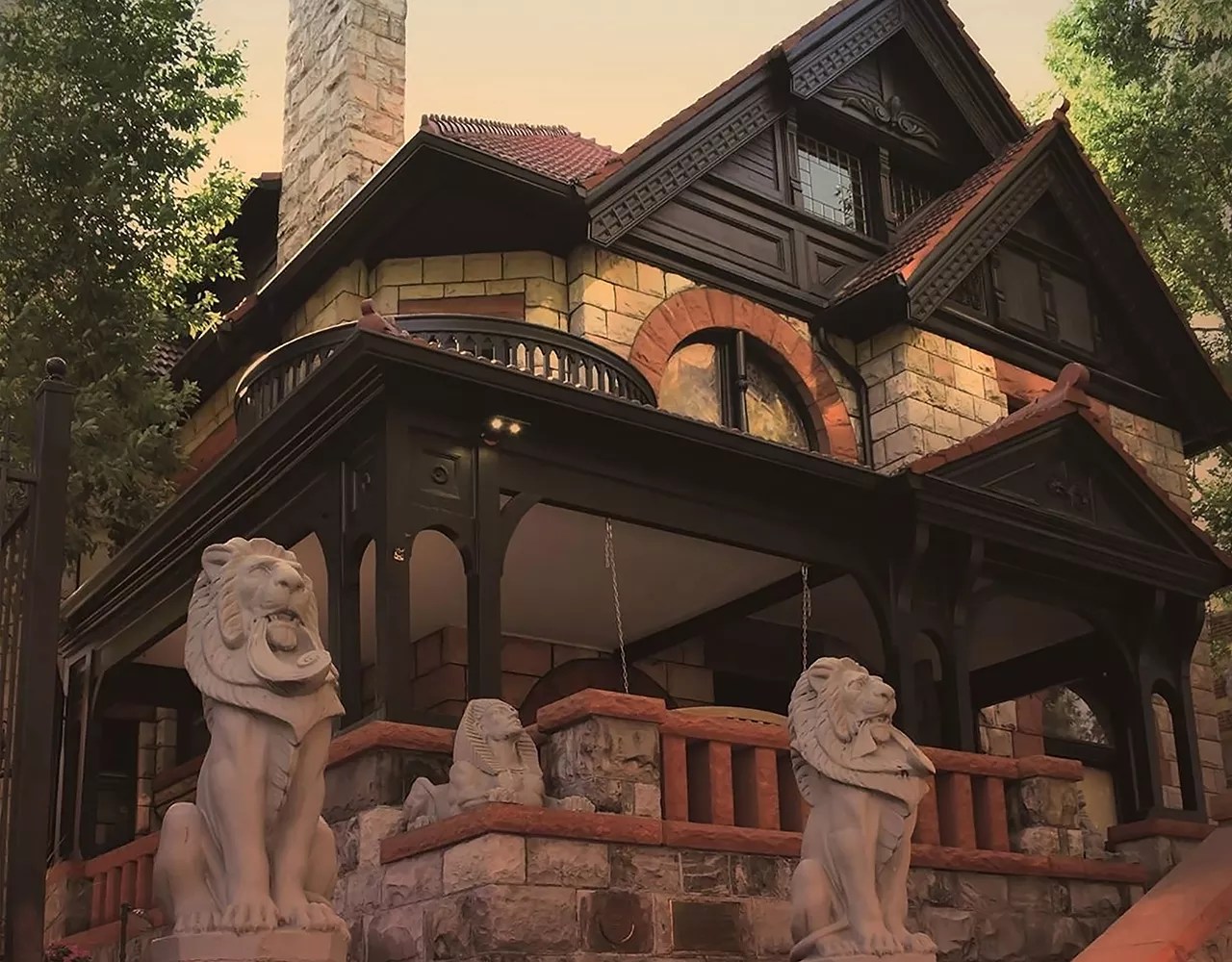
Sigri Strand, Historic Denver, Inc.

Audio By Carbonatix
Margaret Brown might have been unsinkable, but the Victorian mansion at 1340 Pennsylvania Street where she’d lived was going under fast in the late 1960s, when a group of determined Denver residents decided they were tired of seeing this city’s physical history disappear. They fought to preserve the decrepit structure and, in doing so, showed the same undaunted spirit displayed by Margaret (never Molly when she was alive) herself, as she made her way as a teen to Leadville, married mining engineer J.J. Brown, and then, as a sudden millionaire, moved with her husband to Denver and into the House of Lions on Capitol Hill in 1894. Long before she survived the sinking of the Titanic in 1912, Margaret was fighting to install public baths in the city, pushing for more park space, and even running for a seat in the Colorado Senate.
Hers was a story worth sharing, and the group that incorporated as Historic Denver on December 11, 1970, has done just that – and so much more. Even as the organization was transforming the former Brown home into the Molly Brown House Museum (it opened in March 1971), its board was looking around at other potential landmarks that were in the wrecking ball’s path.
“We’ve lost a lot, and we continue to lose things,” says Annie Levinsky, today the executive director of Historic Denver. “We’ve also protected a lot and honored a lot.”
Fifty years after it began as an attempt to save Margaret Brown’s home, Historic Denver is still hard at work, although the features that it’s fighting to save – parks! cultural districts! legacy businesses! – have expanded, and it has a whole bag of preservationist tools that weren’t available fifty years ago.
Back when the city was knocking down buildings with abandon, “‘adaptive reuse’ wasn’t a term anyone used,” notes Levinsky. “Now it’s one of the charges of the Urban Renewal Authority.”
Historic Denver also has a public far more aware that historic structures can be more important than parking lots. That point was brought home a few years ago, when a planned remodel of Larimer Square, the city’s first historic district, had people fighting mad. A new owner could soon take over Larimer Square, but with that historic block of buildings comes the knowledge that this city is full of fans ready to fight for the heart of the city, and will be watching what happens next there. “It answered a fundamental question,” Levinsky points out. “Do we still care?”
The answer is a definitive yes.
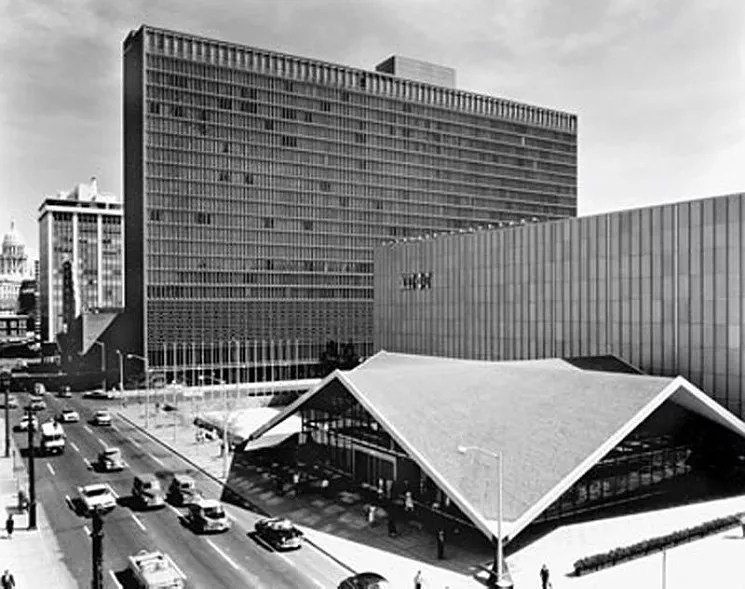
I.M. Pei created a hyperbolic paraboloid in Zeckendorf Plaza.
courtesy of Roach Photos
Although some of Historic Denver’s efforts have not been successful – the city lost the I.M. Pei-designed Zeckendorf Plaza and the organization was unable to broker a deal to save Carmen Court, as it did with Tom’s Diner – it keeps trying. After all, it’s building for the future, and in these uncertain times, such concrete goals gain new importance. “It really resonates with me,” says Levinsky. “These buildings are here for us to appreciate, regardless of what’s happening in the world.”
Many of them, like the Emily Griffith Opportunity School, which its founder envisioned as a place where all could learn, were here during the last pandemic. “They’ve borne witness to our city’s ups and downs,” explains Levinsky. “Right now, it’s so easy to feel disconnected. … These landmarks help us feel connected to our city.”
The current pandemic hit as Historic Denver was looking over its record and considering its future. “As a history-related organization, part of our duty and role is to acknowledge that we’ve been through these things in the past – whether pandemic or war – and try to provide some of that perspective,” says Levinsky. “Through the last fifty years, we’ve seen a lot of ups and downs, and these common stories help draw us through.”
Draw us through to what? Beyond keeping a nonprofit together during a pandemic, Levinsky anticipates plenty of challenges ahead. One is simply to get people to see the buildings, to “make people understand the stories behind them, the complicated stories, the stories that haven’t been told.” In particular, Historic Denver wants to expand its focus on the search for racial justice, “to look harder at the places that should be preserved, and they may not look like the places we’ve preserved in the past,” Levinsky notes.
The buildings may not look grand, but they may come with grand stories about the people who lived there and the movements that started inside. “One of the challenges is to dig deeper,” she admits, adding that while many of the important historic spots in Five Points, the city’s original Black community, have been identified, there is more that the organization could do regarding Denver’s Chicano movement, which was at the forefront of activism in the country fifty years ago.
“Right now, it’s so easy to feel disconnected. … These landmarks help us feel connected to our city.”
Other challenges come from the pressures of development. “Denver will definitely grow in the future,” Levinsky notes, pointing to record house sales. But that growth does not have to come at the expense of the past. “If you preserve something, you can still accommodate new,” she says. Still, that’s not an easy concept to explain to developers…or anti-development groups.
And there are more challenges. How do you support not just the buildings, but the historic businesses that are an intrinsic part of the fabric of the community? San Francisco has a legacy business program that grew out of its preservation program; Historic Denver could consider something like that…if those businesses are still around after the pandemic.
There’s still so much in this city to see – and save.
Among other areas, Levinsky highlights these four:
Industrial sites. “We don’t have a lot of historical industrial areas,” Levinsky points out. Burnham Yard was once one of Denver’s biggest employers, but there hasn’t been much action there since the old trainyard closed a few years ago; the vast property close to the juncture of I-25 and Sixth Avenue was put up for sale, and Levinsky has her eye on the structures that remain there (others were wiped out in the ’60s). She’s also been watching the Denver Rock Drill, just south of Interstate 70, which is “a very significant site,” she says. “The buildings are really spectacular and special.” And with the development that had been announced for the area currently off the table, the property bears watching.
Campus redevelopments. While redevelopment of the property that was home to Loretto Heights College (and Teikyo University after that) is already under way, there’s another big campus property on the market: the former Colorado Women’s College, whose current tenant, Johnson & Wales, is selling the property and closing the school. “We’ve already done an inventory and assessment,” Levinsky says. “The architecture is stunning, with both pre-WWI-era and post-WWII buildings,” including some by lauded Denver firm Hornbein & White. The property also has important ties to women’s history, and preserving culture can be just as important as saving brick and mortar.
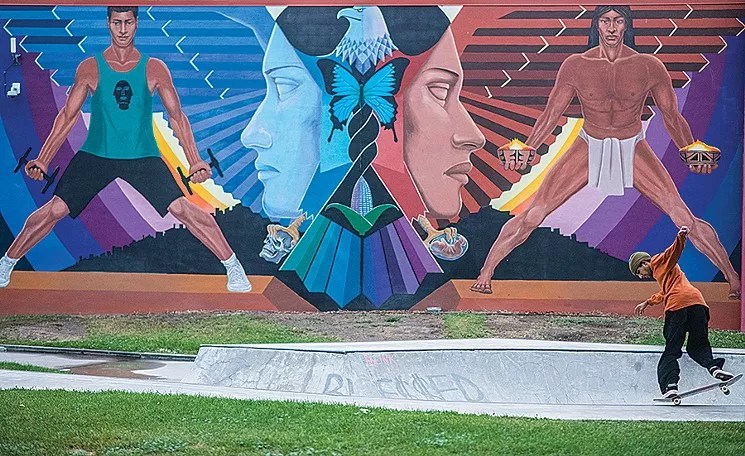
Detail of “La Alma,” by Emanuel Martinez, La Alma Recreation Center, 1325 West 11th Avenue.
Evan Sem
Chicano movement sites. In the late ’60s and early ’70s, Denver was a hotbed of Chicano activism, and “a section of La Alma/Lincoln Park was at the center of that movement,” says Levinsky. The Aztlan Theatre and Su Teatro’s building are both deserving of special attention, as are more modest buildings that were part of that movement. Historic Denver is also working with other groups on preserving Chicano murals across town that were inspired by Mexican modernism, but morphed into something unique to this city.
West Colfax Avenue. There’s been a lot of change along the country’s longest main street, notes Levinsky. “That provides an opportunity.” West Colfax is particularly rich in history, given its collection of buildings tied to the Jewish population that moved into the area more than a century ago – buildings like the Lake Steam Baths. “Talk about a legacy business,” she adds.
And there’s plenty of work to do along East Colfax, too. “Colfax itself is the perennial preservation dream,” Levinsky says.
Margaret Brown might have been unsinkable, but her home is still subject to pandemic rules. Through much of 2020, the building was closed, and Historic Denver had to revise plans for its fiftieth-anniversary celebrations. The new lineup includes an exhibit opening March 19 at the Molly Brown House Museum, and on March 1, the organization launched “Fifty Actions for Fifty Places,” a project that will identify the next fifty places to be honored, preserved or simply have their story told (make nominations here). That list will be unveiled in May, during National Preservation Month.
In the meantime, at our request, Levinsky took a look back over Historic Denver’s greatest accomplishments and offered this list of fifty, all reasons to be thankful for Historic Denver.
“Our landmarks were here then,” she notes, “and they’re here now, and they’ll be here in the future.”
Starting from the beginning:
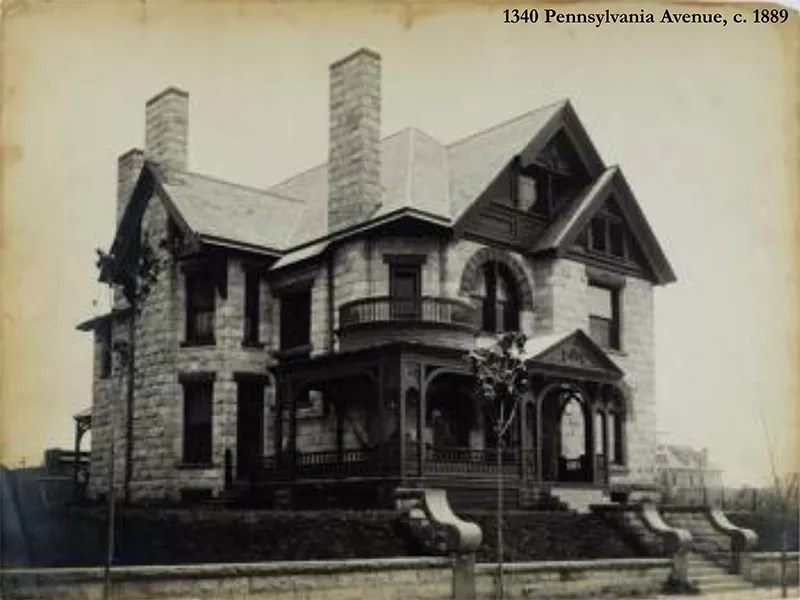
Margaret and J.J. Brown moved into this house in 1894.
Molly Brown House Museum
1970: Molly Brown House Museum
1340 Pennsylvania Street
Historic Denver was founded as part of an effort to purchase the Molly Brown House and save it from the wrecking ball that had felled so many of its neighbors in Capitol Hill. The owner at the time, Art Leisinring, put out the alert that he needed to sell the structure, and Denver history lovers and preservationists worked together to save the decrepit mansion. The museum devoted to telling the story of Margaret Brown, Denver philanthropist and suffragist, has been open to the public since March 1971, and has welcomed well over two million people.
1972: Tramway Cable Building
1801 Lawrence Street
Early Historic Denver boardmember James Judd purchased the building at the last minute to save it from the Urban Renewal Authority. It was home to the Old Spaghetti Factory for decades…and now hosts the offices of Dominion Voting Systems, fingered by President Donald Trump as having “rigged” the election.
1973: Richtofen Castle
7020 East 12th Avenue
One of Historic Denver’s first properties to use an easement – a private agreement between an owner and a nonprofit that provides perpetual protection from demolition. This was an important maneuver, because in the 1970s, local ordinances could not provide a similar level of protection, and the Montclair area was not yet a historic district.
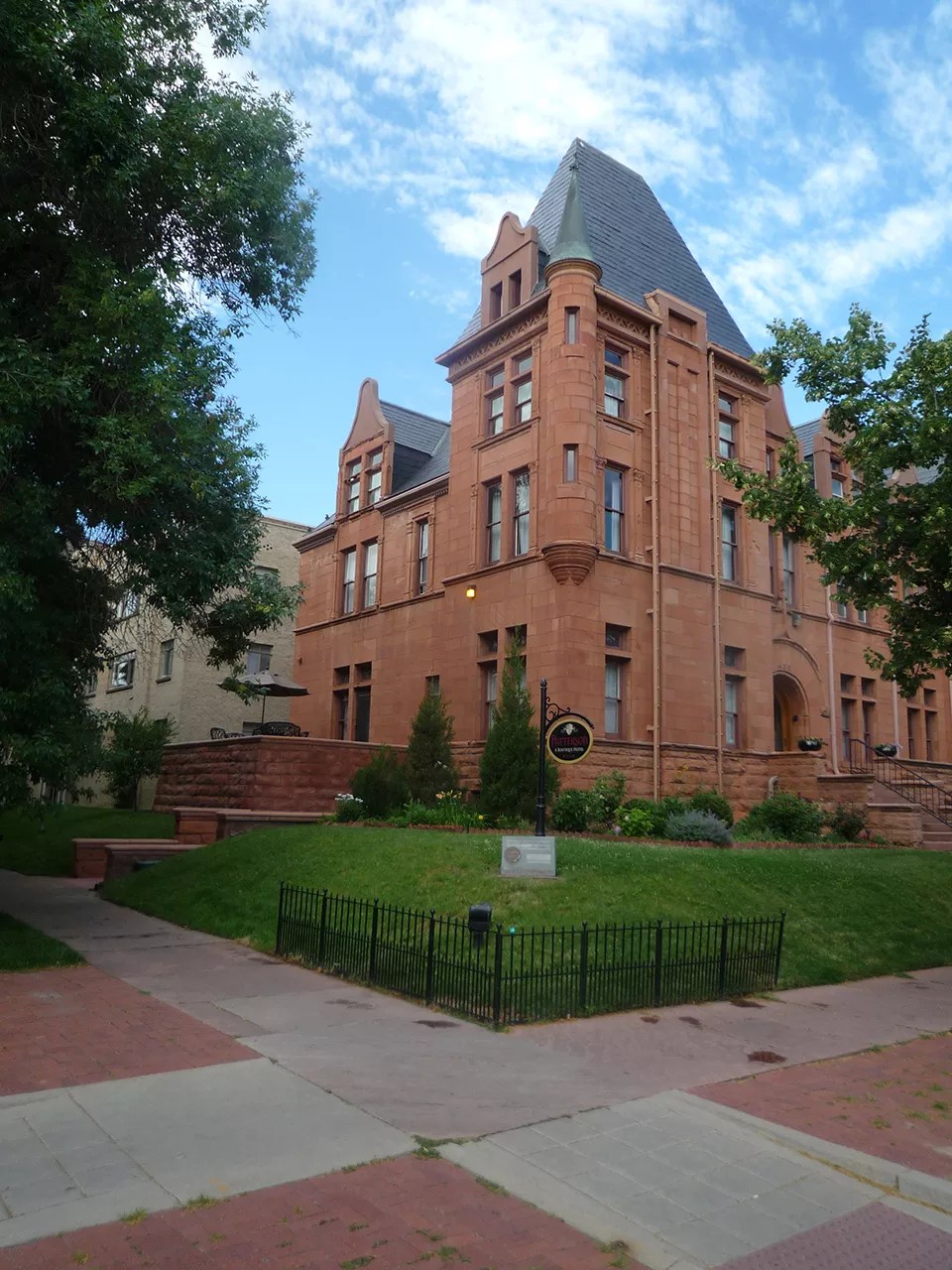
You can now check in to the Croke-Patterson Mansion, a B&B.
Historic Denver, Inc.
1973: Croke-Patterson Mansion
420 East 11th Avenue
Another early use of an easement by Historic Denver ensured that foreclosure, vacancy and dereliction during the 2008-2009 recession did not lead to demolition of this building. Through grants and tax-credit support, the house has been restored and reopened as a bed-and-breakfast.
1974: Montclair School
1301 Quebec Street
Historic Denver and residents of Montclair found a purchaser who agreed not to demolish the circa 1891 school. Opportunities Industrialization Center took over the lease and held classes for students in the space, which today is a preschool – and a Denver landmark. This was one of the first school buildings to be saved.
1973-1976: 9th Street Historic Park
Auraria Campus
On the heels of saving the Molly Brown House, Historic Denver boardmembers used their negotiating skills to persuade the State of Colorado and the Denver Urban Renewal Authority to let the organization preserve one representative block of the Auraria neighborhood, which was being bulldozed to make way for shared higher-ed campuses. Historic Denver had three years to raise over $2 million to rehabilitate the structures and turn the street into a park; the group conducted the work with volunteers and young craftspeople, then turned the buildings back over to the state. In the process, some of the oldest buildings in the city were saved, as were the stories of the diverse families displaced when the neighborhood was lost.
1979: Ghost Building
800 18th Street
In the late ’70s, Public Service Company of Colorado and Historic Denver reached an agreement that the 1891 Ghost Building, designed by William Lang, would be taken apart piece by piece and moved to another site to avoid demolition – a better compromise than complete demolition. Today the building is for lease.
1980s: Curtis Park Restoration
Park Avenue to Downing Street, Larimer to Welton streets
In partnership with neighborhood leaders, Historic Denver helped survey the Curtis Park neighborhood in Five Points and nominated it to the National Register; it eventually achieved local historic-district status. Historic Denver also secured and administered federal block grants that supported the exterior rehabilitation of dozens of structures across the neighborhood.
1980s: Paramount Theatre
1621 Glenarm Street
Denver had already lost several historic theaters when the Paramount was threatened with demolition. With few tools at its disposal – at the time, historic designation did not have the protections granted today – the organization used all its savings from its first decade to purchase the building, place a protective easement to ensure its survival, and establish the Paramount Foundation, which owned and operated the building until 2006. To this day, the easement Historic Denver holds provides special protection to the Temple Buell-designed icon.
1983: Navarre Building
1725 Tremont Street
Working with partners, Historic Denver advocated for a transfer of development-rights policy that allowed the Navarre to essentially sell its development rights and remain intact on Tremont Street. Built in 1880 as the Brinker Collegiate Institute, a school for young girls, today it houses the American Museum of Western Art. One of the earliest surviving downtown buildings, it was designed by Frank Edbrooke.
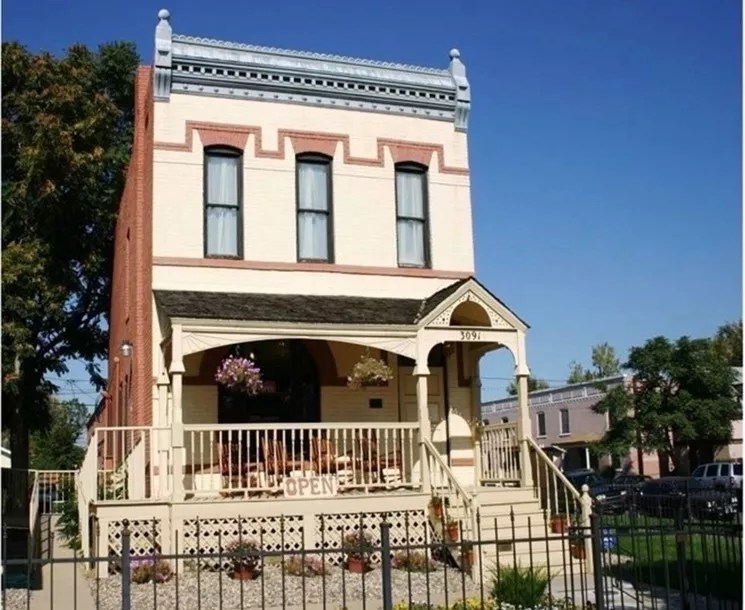
The Justina Ford House won a 0,000 preservation grant last year.
Black American West Museum
1984: Dr. Justina Ford House
3091 California Street
The longtime home of Denver’s first licensed African-American female doctor was threatened with imminent demolition in the early 1980s. Community members reached out, and Historic Denver was able to negotiate a short stay, then funded the move of the structure to its current location, entering into an agreement with the Black American West Museum, which has been the owner and steward ever since. Last year, it received a $150,000 grant from the national Partners in Preservation program.
1984: Mayan Theater
110 Broadway
Historic Denver joined with the Friends of the Mayan to save this Art Deco theater from the threat of demolition by Canadian investors. The fight included nominating the building for landmark status – which at the time only provided a short-time stay of demolition – then helping come up with a use strategy that made the theater and adjacent historic bank building viable.
1986: Denver Parks & Parkways National Register
Various locations
Longtime Historic Denver supporters and boardmembers Don and Carolyn Etter prepared a successful nomination to put Denver’s City Beautiful Parks & Parkways on the National Register of Historic Places – making it the first parkway system in the country to be listed. The honorary designation has made dozens of structures and features eligible for grant funding, and elevated the importance of these assets to city life.
1986/2006/2020: Evans School (in progress)
1115 Acoma Street
Historic Denver advocated successfully to save this school in the Golden Triangle from being replaced by a convention center in 1986, and in the 1990s began advocating for preservation of the empty building. Historic Denver helped secure grants to assess the structure, and advocated that the city enforce its derelict-buildings ordinance to ensure proper care. Restoration work began incrementally, and in 2019 the site was purchased by a group experienced with adaptive reuse.
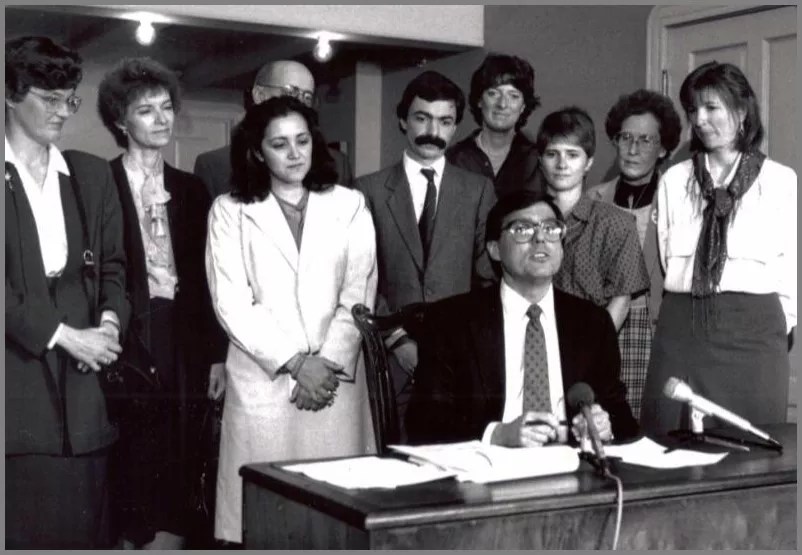
Mayor Federico Pena approves the creation of the Lower Downtown Historic District.
Historic Denver, Inc.
1988: Lower Downtown Historic District
15th to 20th streets, Wynkoop to Market streets
Historic Denver worked throughout the 1980s to protect the warehouse district by Union Station, where over a third of the buildings had already been demolished. Ultimately, the organization led the effort to create the historic district that, though controversial at the time, protected the buildings from demolition and stabilized the area for reinvestment and reuse, leading to the LoDo we know today.
1990s: Denver Public Schools Designation Efforts
Various locations
Throughout the 1990s, Historic Denver volunteers worked with students to nominate schools for historic designation. The organization provided the training, helped with research and coached students through public hearings. This led to the protection of dozens of historic DPS schools and created a sense of pride in neighborhoods. Today DPS has a historic-schools policy that recognizes the special value of these assets to the larger community.
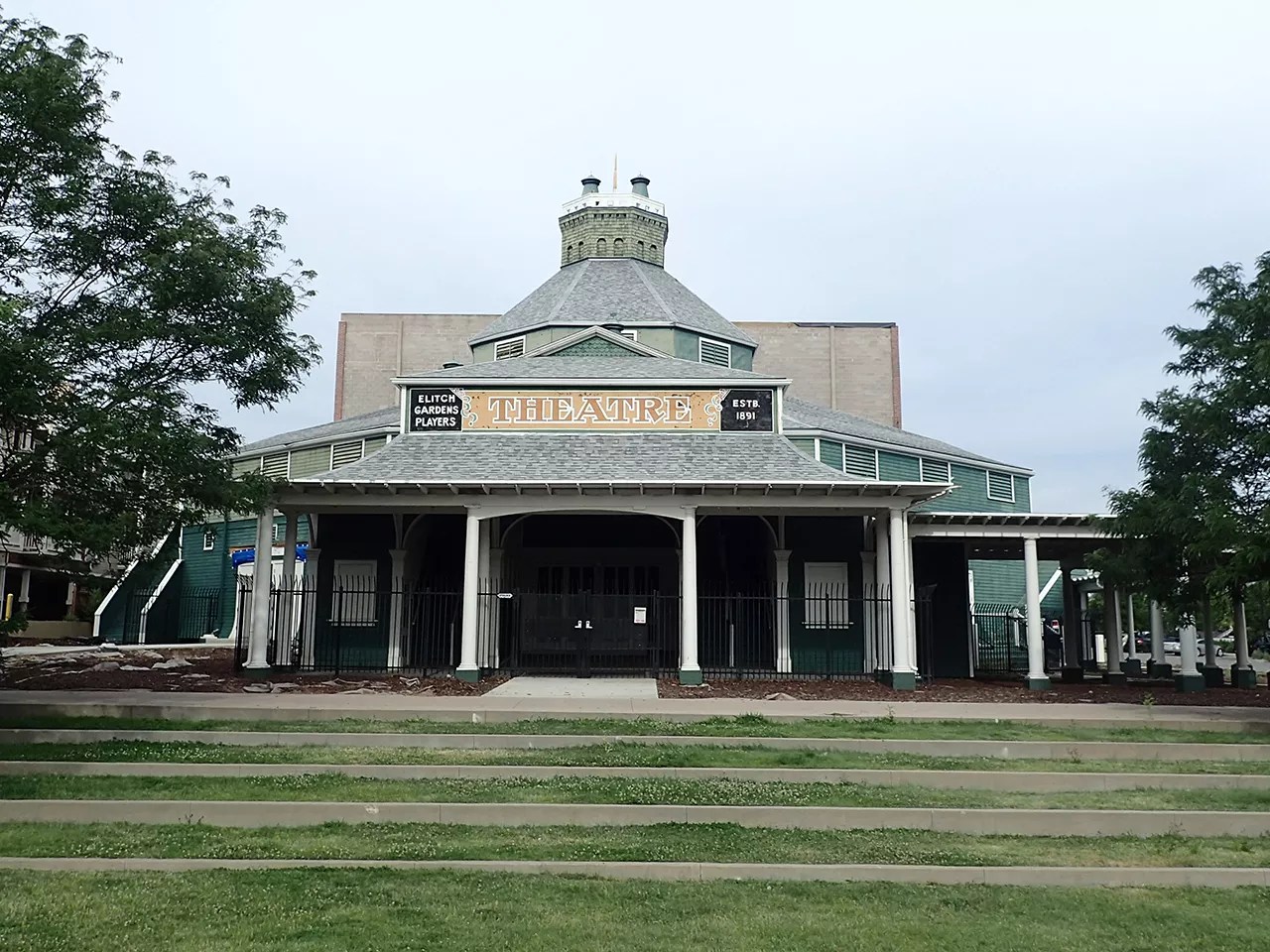
Although the original Elitch Gardens is long gone, the theater remains…and renovations continue.
Historic Denver, Inc.
1990s: Elitch Theatre
3655 West 37th Avenue
When the old Elitch Gardens Amusement Park closed, most of the site was redeveloped – but the theater was saved by the site’s new owners. Since then, the Historic Elitch Theatre Foundation has been working to restore and reopen the building for public use. Historic Denver holds an easement on the property and has helped to secure funds for roof and other repairs.
1990s/2010s: Union Station
1701 Wynkoop Street
Union Station has had to be “saved” numerous times – especially in the 1990s, when Historic Denver had to push for its preservation in the face of demolition threats. During the most recent renovation, Historic Denver managed a Historic Structure Assessment before the development team was selected, and helped raise funds and manage the restoration of the front canopy.
1996: Ferril House
2123 Downing Street
The home of beloved poet Thomas Hornsby Ferril was given to Historic Denver, which started restoration of the 1889 Queen Anne home. It later became the offices of the Colorado Center for the Book and then the Lighthouse Writers Workshop before returning to use as a private residence. It is now protected by a Historic Denver easement.
1996: Joshel House
220 South Dahlia Street
Historic Denver worked with then-owner Suzanne Joshel to thoroughly protect this mid-century modern jewel box, which the Joshels built using architects Joseph and Louise Marlow in 1950. Suzanne donated an easement to Historic Denver to ensure its protection after her death. The small home has since been lovingly restored.
1999: Chamber of Commerce Building
1742 Champa Street
Historic Denver helped secure grants for the restoration of the elaborate facade of the original Chamber of Commerce Building, working in partnership with the property owner. The group continues to protect the building with an easement.
2000: Baker Historic District
Baker neighborhood
Historic Denver worked with a neighborhood steering committee to evaluate preservation strategies over a series of meetings, and to later develop a historic-district proposal for this area in the center of town filled with lovely Victorians.
2000: Downtown Historic District
Various locations
After the loss of the Central Bank Building and Zeckendorf Plaza, Historic Denver and the National Trust for Historic Preservation partnered to find a way to prevent the further loss of iconic downtown structures. This resulted in the first “non-contiguous” historic district of its kind, protecting 43 downtown buildings while intense new development occurred around and between the structures. Notable contributors to the district include the Brown Palace, the Equitable Building, Colorado National Bank, the Sage Building, the Colorado Building, and more.
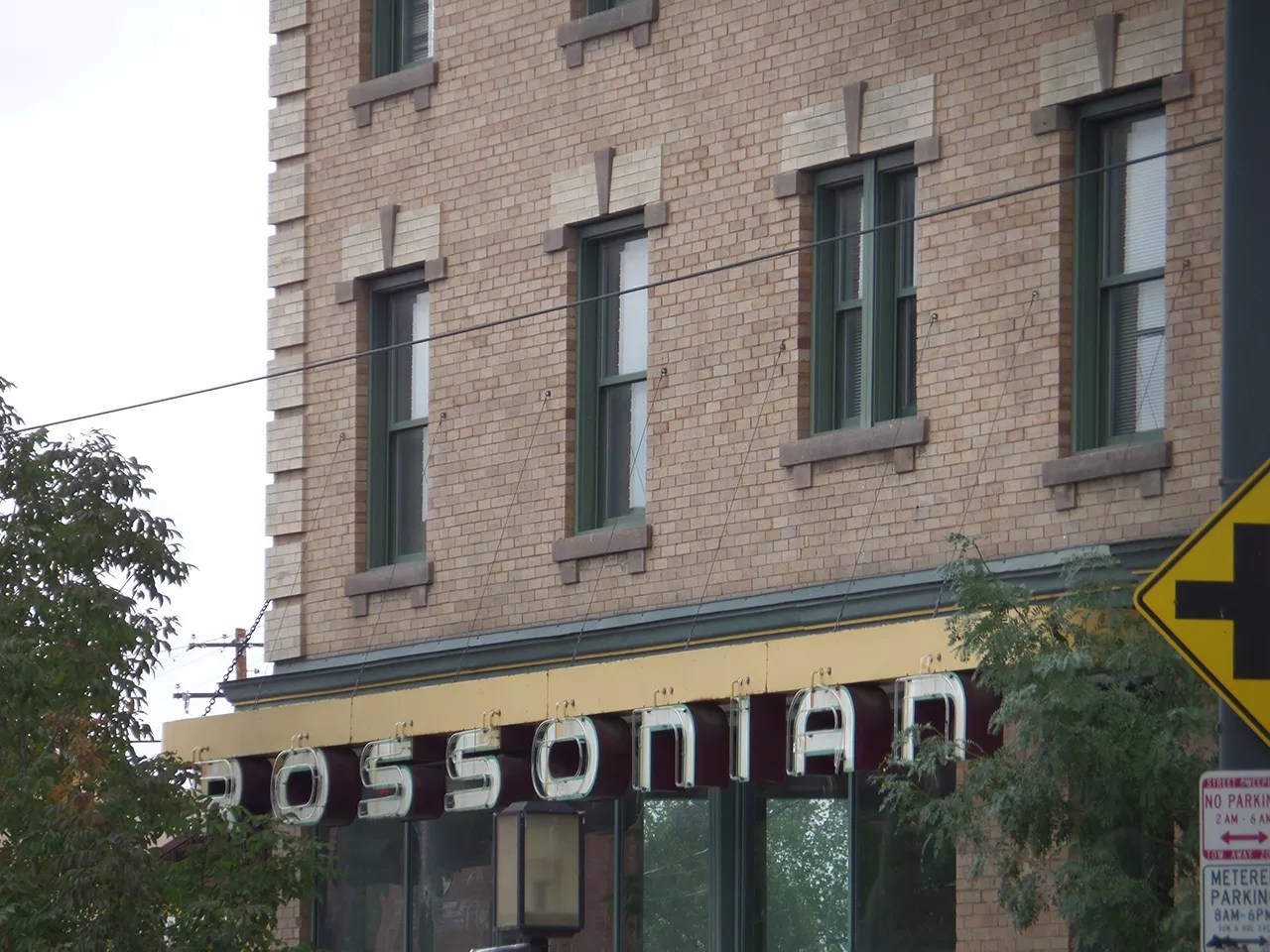
The Rossonian hosted jazz great who visited the “Harlem of the West.”
Historic Denver, Inc.
2002: Five Points Cultural District
24th to 30th along Welton Street
Historic Denver worked with community leaders to develop the Five Points Cultural Historic District (originally called the Welton Street Cultural Historic District). The district protects key historic commercial buildings along Welton Street, once known as the “Harlem of the West.” Given recent development trends, this heritage might have been lost without such protection. The district includes the iconic Rossonian, where Historic Denver is now supporting a rehabilitation project.
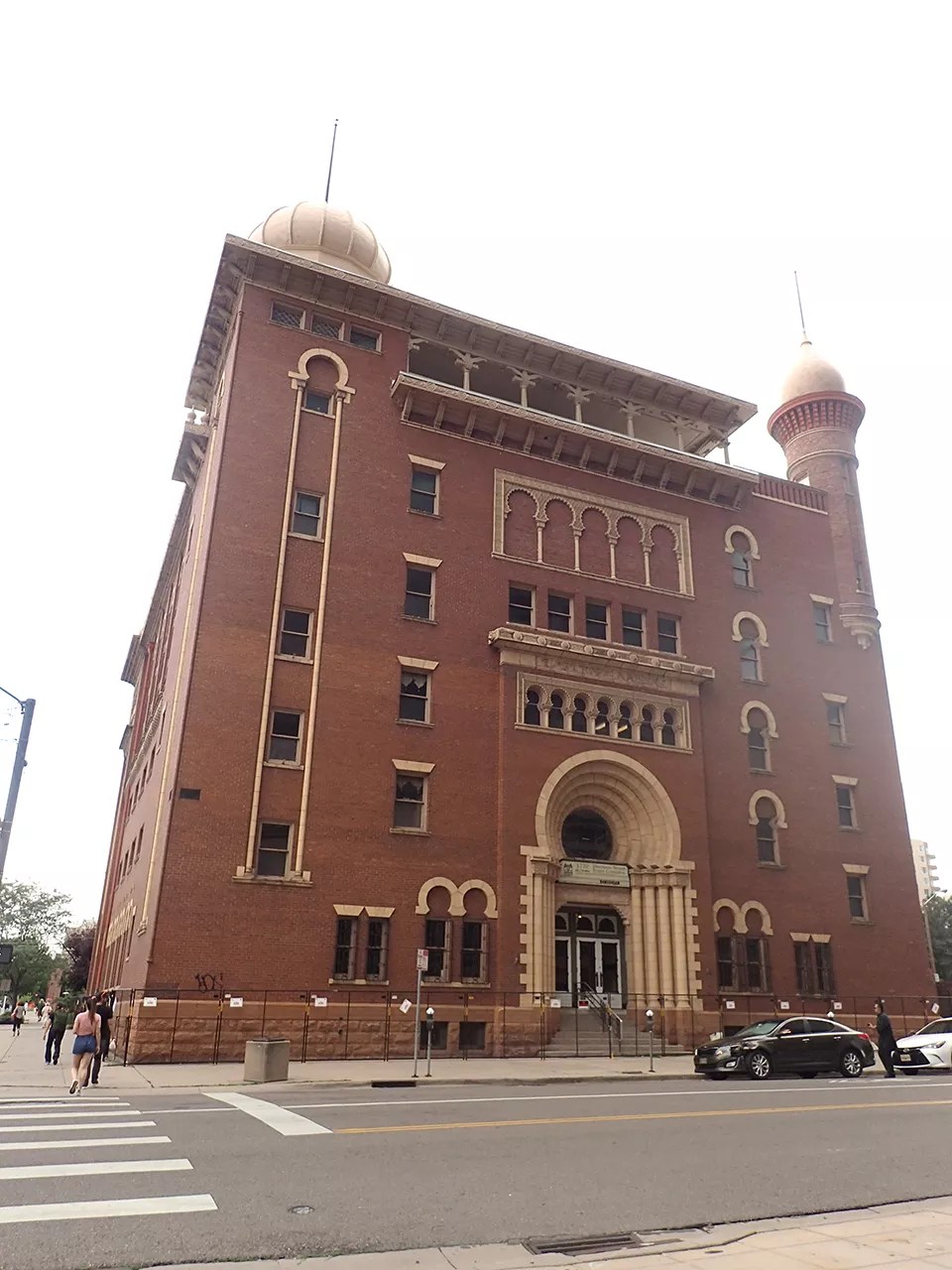
El Jebel hosts one of Denver’s most impressive interiors.
Historic Denver, Inc.
2003/2020-2021: El Jebel
1770 Sherman Street
Historic Denver holds easements on both the outside and the inside of this large-scale community building, which has one of the most ornate and decorative interiors in the city. The easements ensure that the building will be preserved even as significant development occurs on the adjacent parking lot. Owing to recent vacancy, the easements have also ensured that vandalism has been repaired and the building secured while preparations for reuse are made.
2006: Lowenstein Theater
2526 East Colfax Avenue
Historic Denver helped to attract a preservation-minded buyer for the vacant theater built in the ’50s by Helen Bonfils, then supported the rehabilitation with advocacy, later submitting a local-landmark application in partnership with owner St. Charles Town Co.
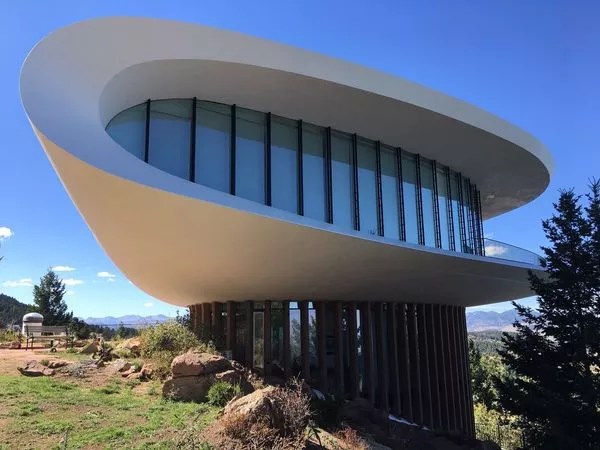
Shannon Stage/Historic Denver
2006: Sculptured House
Genesee Mountain, off I-70
John Huggins, owner of the Charles Deaton-designed house at the time, donated an easement to Historic Denver to protect this unusual building overlooking Interstate 70, also known as the “Sleeper House” for its role in the Woody Allen movie Sleeper. Because Genesee, where it is located, does not have a landmarks program, a private easement was the only way to ensure that the structure is not lost and is preserved and maintained.
2006/2013: Four Winds American Indian Council
201 West Fifth Avenue
Historic Denver secured two rounds of grants to restore this community landmark and resource for the Indigenous community.
2007: 430 Years Church
2302 Washington Street
Historic Denver secured grants to support the rehabilitation of this steepled landmark, an essential move with a dwindling congregation struggling with upkeep. Historic Denver still protects the building with an easement, and the congregation is growing.
2010: JCRS Isaac Solomon Synagogue
JCRS/RMCAD Campus, 1600 Pierce Street, Lakewood
One of the few remaining historic buildings on the old JCRS campus (now Rocky Mountain College of Art + Design), this small stone synagogue helps tell the story of efforts to treat and cure tuberculosis in early Denver – and the efforts of the Jewish community, in particular. Historic Denver secured grant funds to restore the structure for community uses.
2010: Holland House
2340 South Josephine Street
Historic Denver authored the designation application for this unique, experimental Eugene Groves home, built of concrete in 1933 for Mary Holland, a prominent leader in child-welfare efforts. This is still the only residential Groves design to be designated; because of its small size and large lot, the building could easily have become a target for scraping in the rapidly changing University Park neighborhood.
2011: Cathedral High/Seton Hall (in progress)
1840 Grant Street
A developer seeking to purchase the old high school/convent and gym from the Archdiocese applied for a certificate of non-historic status for the property in 2011. Historic Denver, Capitol Hill United Neighborhoods and Colorado Preservation Inc. responded by filing designation applications, then convinced the Archdiocese to instead work collaboratively to find a preservation-minded buyer. Historic Denver hosted an open house, inviting potential purchasers, and conducted significant outreach. The site was subsequently sold twice, most recently to GFI, which is planning a hotel reuse that was just approved for tax-increment financing. GFI plans to list the building on the National Register.
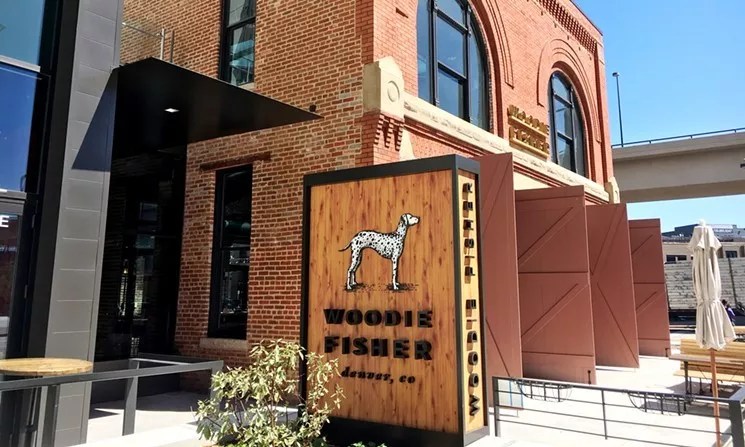
One of the last structures behind Union Station is now a restaurant.
Mark Antonation
2011-2018: Hose Co. No. 1
1999 Chestnut Place
Designated historic in the 1980s, by 2010 the oldest firehouse in the city had fallen into severe disrepair, and its owner applied for permission to demolish one of the last remaining structures in what was once “The Bottoms,” behind Union Station. Historic Denver secured funds for emergency structural support and advocated at the Denver Landmark Commission. Ultimately, the owner agreed to incorporate the building into a hotel development, and today it houses Woodie Fisher, a restaurant.
2011: Holy Transfiguration of Christ Orthodox Cathedral
349 East 47th Avenue
Historic Denver secured and managed grant funds for restoration of the church, a landmark in the Globeville neighborhood that has served generations of community members. Today it is protected by a Historic Denver easement.
2010s: Bosler House
3209 West Fairview Place
This longtime Denver landmark, one of the oldest houses in the city, fell into serious disrepair after its owner deconstructed part of the roof and left the building open to the elements for several years. Historic Denver and neighbors advocated for enforcement of the city’s derelict-buildings ordinance, then secured grant funds to help the new owners restore the 1870s structure to its full glory.
2013: Margaret Long House
2070 Colorado Boulevard
Historic Denver authored the landmark designation application for this building, the home of pioneering doctor Margaret Long. The designation made the house eligible for financial incentives critical to its ongoing restoration by a young family.
2015: Ghost Rose House
1899 York Street
This house on the western edge of City Park was threatened with demolition in 2015, when new owners applied for a certificate of non-historic status. Historic Denver was able to persuade them to instead split the lot and sell the historic home to a preservation-minded buyer. The new buyer applied for landmark designation and is restoring the home.
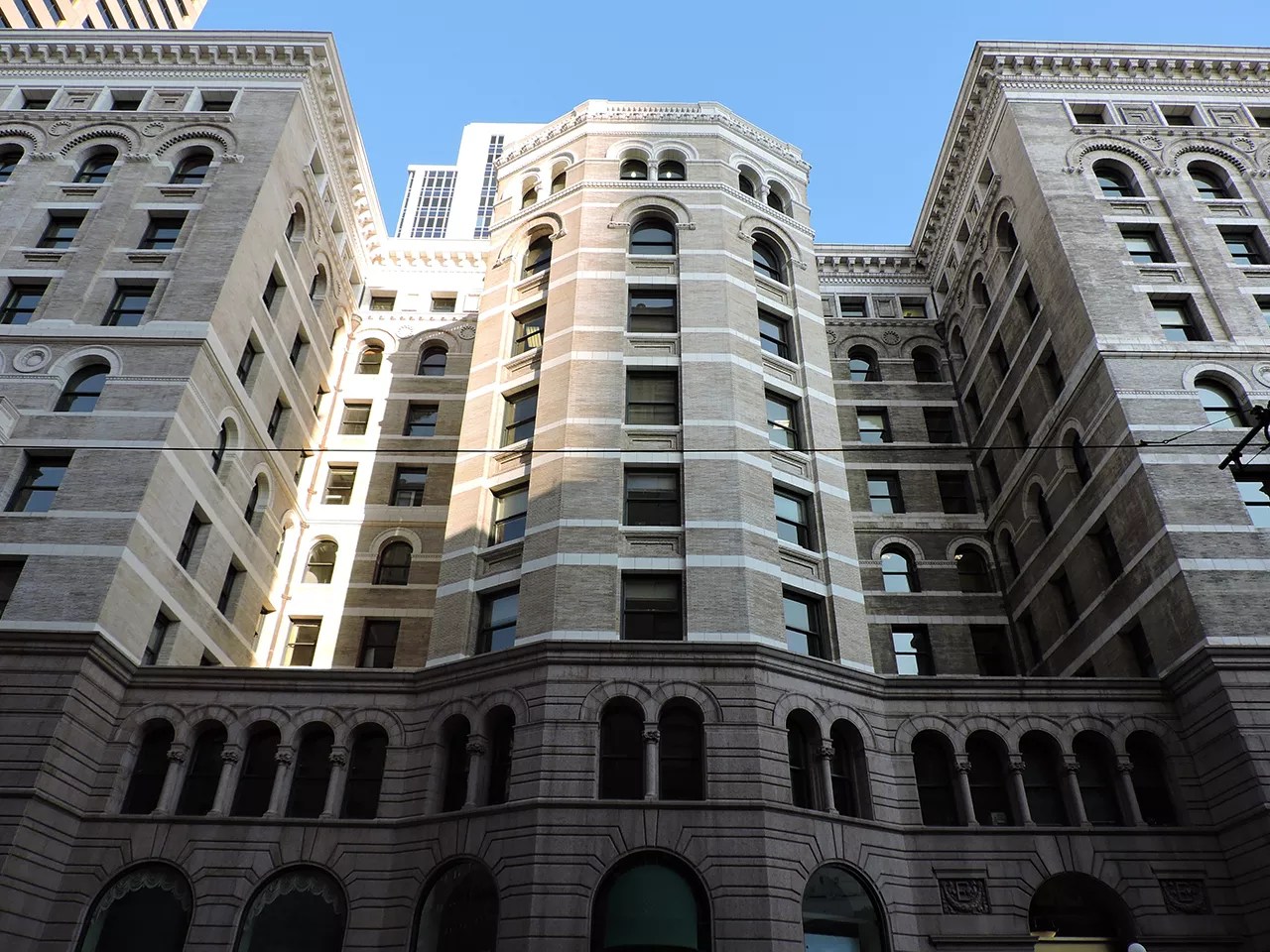
Downtown’s Equitable Building has a long future ahead of it.
Historic Denver, Inc.
2015: Equitable Building
730 17th Street
One of Denver’s largest historic office buildings, the Equitable Building was assured a sound future when Historic Denver not only protected the structure as part of the Downtown Historic District, but also secured grant funds for exterior rehabilitation and accepted an easement to ensure perpetual protection.
2015: Smith’s Chapel/Denver Inner City Parish
910 Galapago Street
This building served as the Denver Inner City Parish, a source of important cultural and social programs in La Alma Lincoln Park, from the 1960s until 2019. During that period, Historic Denver helped secure several rounds of funding for restoration of the church, one of the oldest in Denver, and related school structures. In 2015, Historic Denver also accepted an easement, which now protects the building after it sold to a private ownership group last year.
2015: Tavern Uptown
538 East 17th Avenue
In 2015, more than 1,500 people signed a petition to save the Tavern Uptown. Historic Denver led the negotiations with Southern Land Company to incorporate the full structure, a turn-of-the-last-century market, and a portion of an adjacent structure into a block-long housing project. Historic Denver suggested an approach that would ensure that the same number of units were built on the site while preserving the pedestrian experience along East 17th Avenue, known as Restaurant Row.
2016: Krisana Park
Between Florida and Louisiana avenues, South Dahlia and South Forest streets
Historic Denver used its inaugural Action Funds grant to develop a Pattern & Design idea book in collaboration with Krisana Park. This book identified the special features of the mid-century neighborhood and eventually led the area to become a Conservation Overlay District, ensuring that the neighborhood’s special characteristics – including 145 homes in Virginia Village – are perpetuated.
2016: Emily Griffith Opportunity School
1250 Welton Street
In 2012, Denver Public Schools prepared to sell the former campus of the Emily Griffith Opportunity School and filed for a certificate of non-historic status, which would have cleared the way for demolition. Historic Denver mobilized and reminded DPS of its historic-school protocols, and DPS agreed to engage in a process to explore preservation and designation. The designation passed in 2016, and the site was sold to Stonebridge, which is building a hotel that will keep much of the original structure. The rehabilitation and adaptive reuse is currently under construction.
2017: Packard’s Hill Historic District
Lowell Boulevard to Osceola Street, 25th to 32nd avenues
Historic Denver supported local residents in surveying and applying for historic-district designation for this area of West Highland. It is Denver’s first historic district designated in part for its connection to women’s history, owing to the influential female owners, professionals and developers who helped build the neighborhood.
2017-2019: Midwest Steel & Iron Works
25 Larimer Street
This 1903 building was once part of a larger industrial complex. As mitigation for the loss of other historic fabric resulting from transportation projects by the Colfax Viaduct, Historic Denver accepted an easement on what’s now known as the Ironworks, and monitored its condition for many years until an owner was found to rehabilitate and reopen the building as an events center. It will soon have a new neighbor: Meow Wolf Denver, slated to open in late 2021.
2018: Henderson House
2600 Milwaukee Street
John Henderson was Colorado’s first licensed African-American architect. He wanted to be sure that the modernist home he’d built for himself in the ’60s in the Skyland neighborhood just north of City Park would not be demolished after his death, so Historic Denver authored a designation application and shepherded it through the city process on his behalf. Henderson passed away in 2018, but his son, Lynn Henderson, was there to see a Historic Landmark plaque placed on the home.
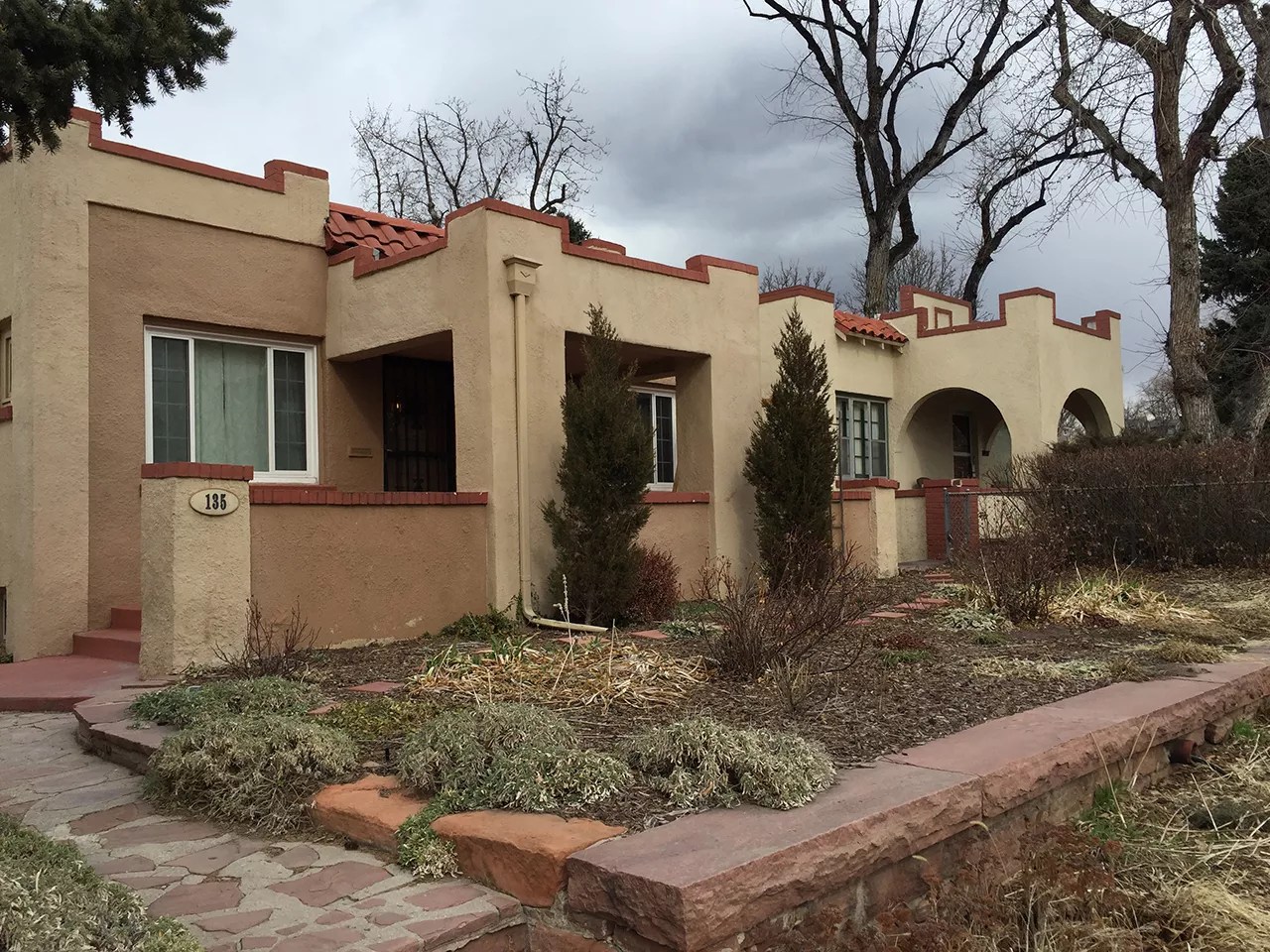
The Vassar Bungalows were built from the remains of an old elementary school.
Historic Denver, Inc.
2019: Vassar Bungalows
Vassar Avenue, just east of Acoma Street
Historic Denver provided Action Fund money and technical support to produce a historic-district application for this unique row of six homes in Rosedale, all built in the 1920s from the remnants of the elementary school that once sat on the land. The school’s retaining wall still wraps the six Spanish-style homes.
2019: River Drive Historic District
River Drive, bounded by Clay Street, 23rd Avenue and Bryant Street
Historic Denver surveyed Jefferson Park through the Discover Denver program, then worked with owners along River Drive to consider a historic-district effort. The neighbors conducted additional research, and then Historic Denver supported their application with Action Fund dollars. The district now protects the oldest homes and last intact block in a rapidly changing Jefferson Park.
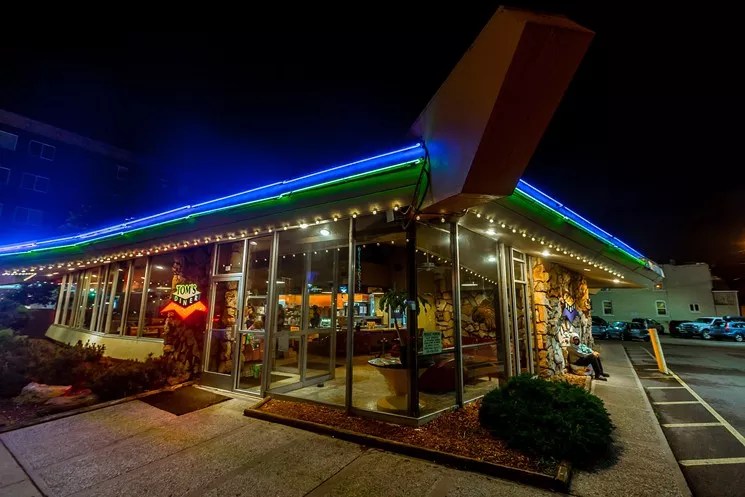
A variation on Tom’s Diner will light up East Colfax Avenue.
Brandon Marshall
2019: Tom’s Diner (in progress)
601 East Colfax Avenue
Community members reached out to Historic Denver for help when a certificate for non-historic status was filed for the classic Googie building in 2019. The diner had previously been identified as eligible for the National Register of Historic Places, but had not yet been listed. More than 700 people ultimately signed on in support of preservation, and Historic Denver worked to find a win-win solution, which resulted in finding a preservation-minded buyer. GBX group has partnered with former owner Tom Messina on a redevelopment of the building and site, which was officially listed on the National Register and protected with a preservation easement in late 2019.
In Progress: National Western Stock Show Center
Various locations on National Western site
Starting in 2011, when the National Western Stock Show announced a desire to move to Aurora, Historic Denver has worked to educate leaders about the significance of the site, advocating for historic analysis and consideration of the buildings on the property. The result is a commitment to preserve several important buildings, site features and materials, including the Stadium Arena and the Livestock Exchange Building.
In Progress: Loretto Heights Buildings
South Federal Boulevard and Dartmouth Street
The previous owner of the former Loretto Heights campus went to Historic Denver early with its sales plan, and Historic Denver emphasized the importance of preserving the Administration Building as well as several other structures designed by prominent architects and tied to the cultural history of the school. Historic Denver has remained at the table throughout the planning process, and the current owner, Westside, has committed to protecting the old campus, including Pancratia Hall, which is currently being converted to affordable housing.
This story has been updated to include Historic Denver events starting in March.